Lecture 43
git collaboration
MCS 275 Spring 2024
Emily Dumas
Lecture 43: git collaboration
Reminders and announcements:
- Project 4 due Friday
- Don't forget your course evaluation
- I will post on Blackboard about what comes next (e.g. course material archive)
Last time
We worked on a game with PyGame.
We cloned it from GitHub, made changes, committed, and pushed them.
Anyone can clone the repo and work locally. Only I can push to it, hence no true collaboration.
GitHub collaboration
We can mark other GitHub users as collaborators on a repo, allowing them to push to it.
(Private repos are invisible except to collaborators.)
Key consideration: Online repo can change with no action from us.
Revised workflow
git pull– get updatesgit log– see what's changed- Make and test your changes
git add file1git add file2git commitgit push– make changes available to others
When can you push/pull?
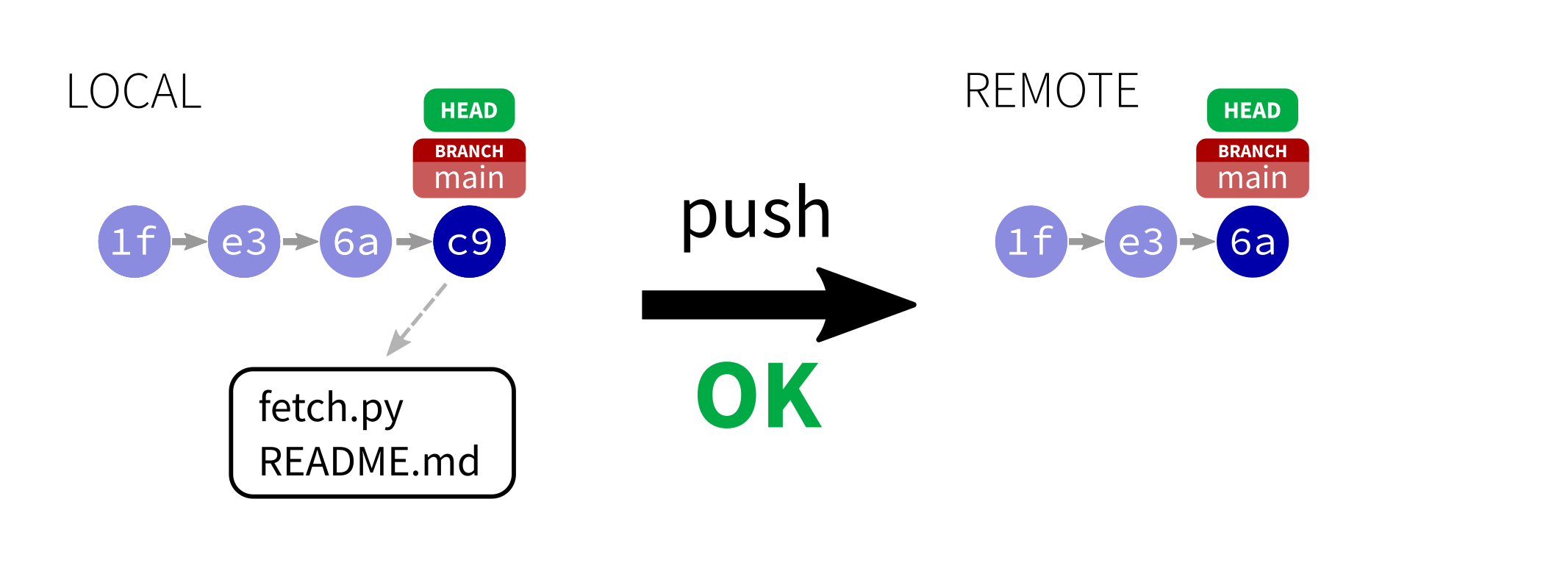

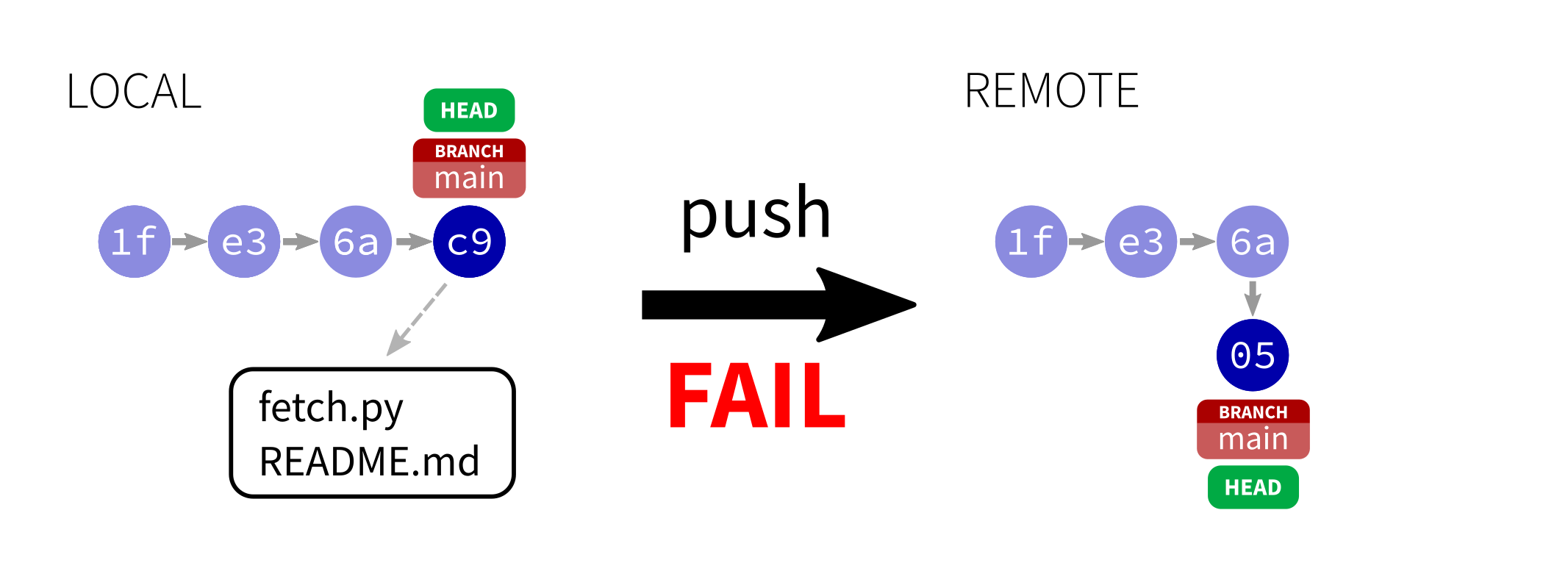
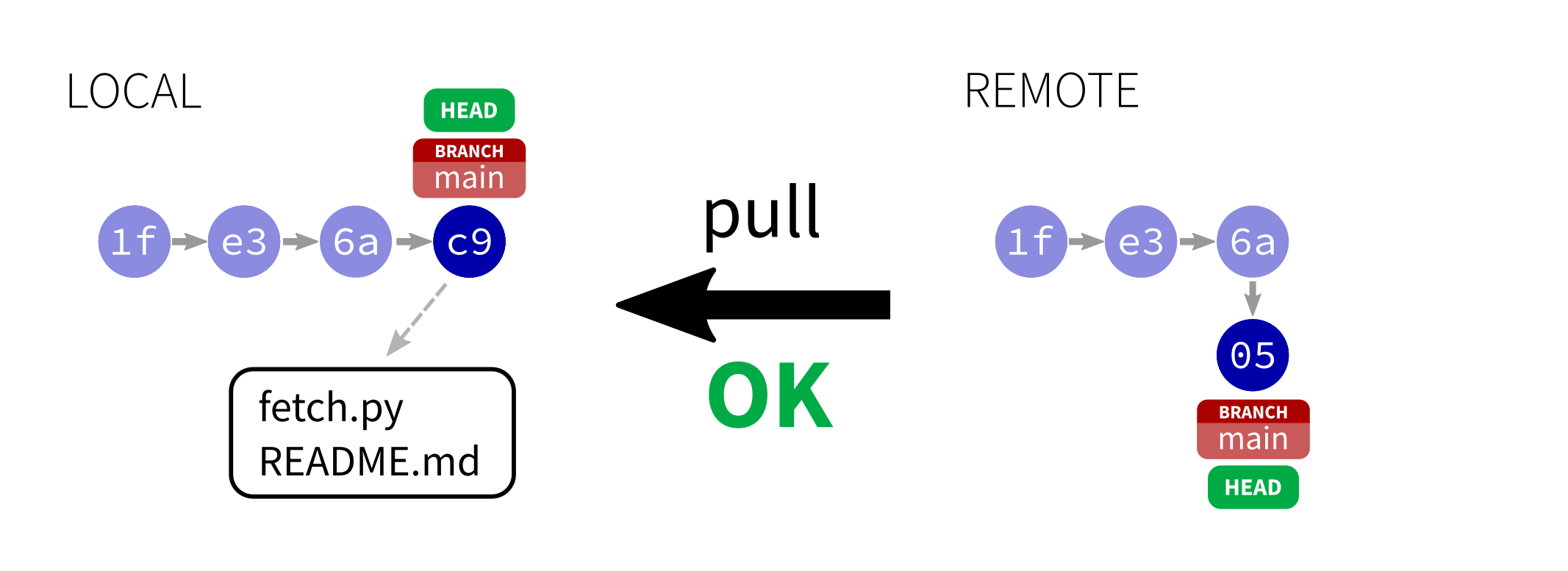
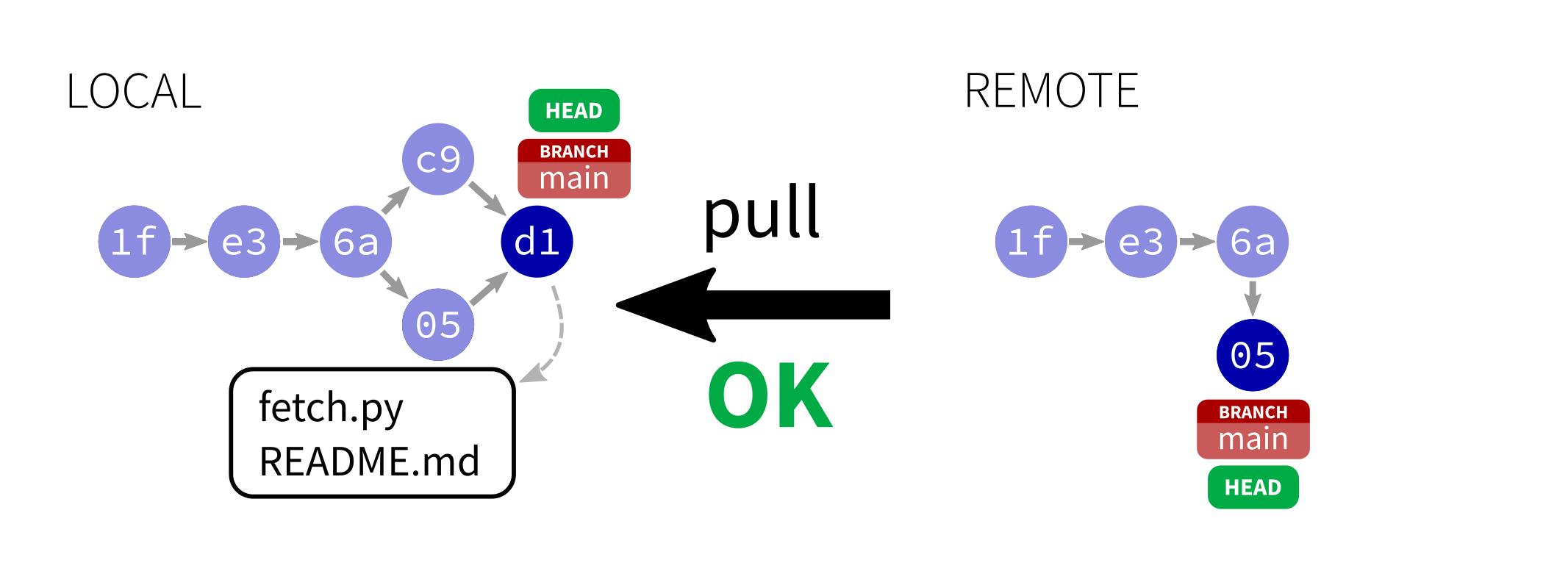
The local and remote repos have a commit labeled HEAD, the "latest".
You can push only if the local HEAD derives from the remote HEAD.
You can always pull, but it may trigger a merge.
Failed push
If a git push fails, the solution is to:
git pull– starts a merge, often completes automaticallygit push– to send the unified updates to the remote


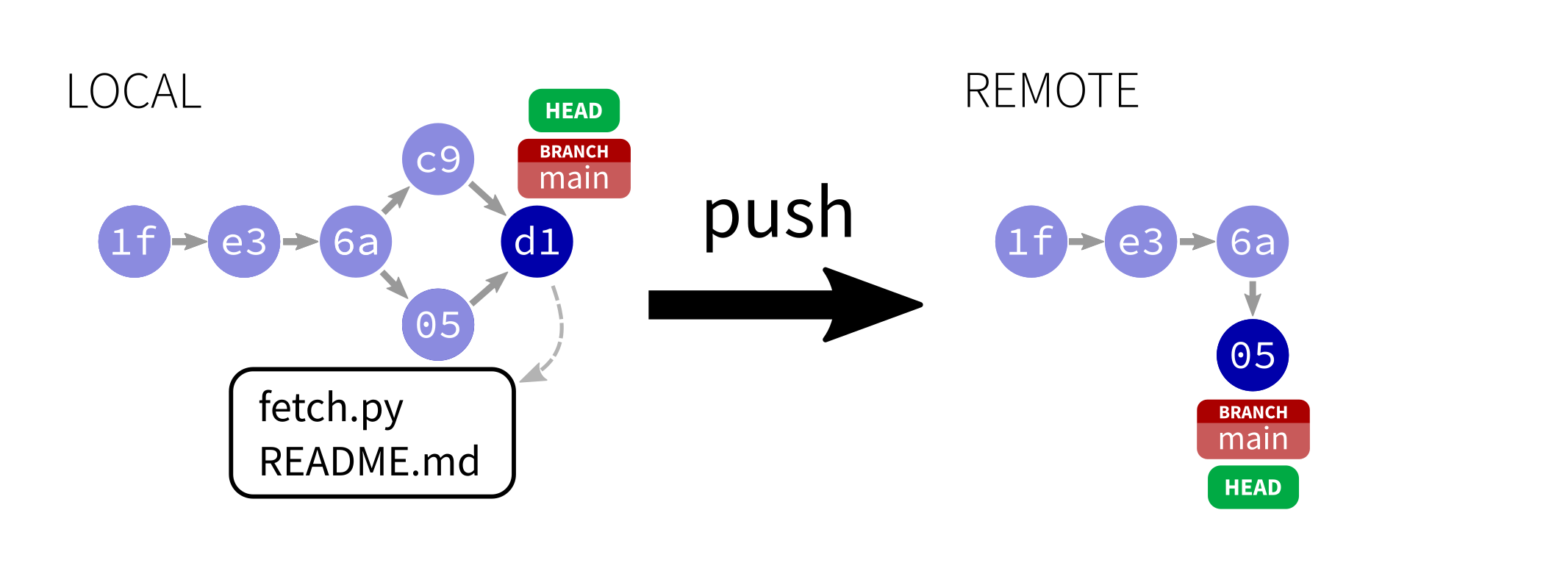
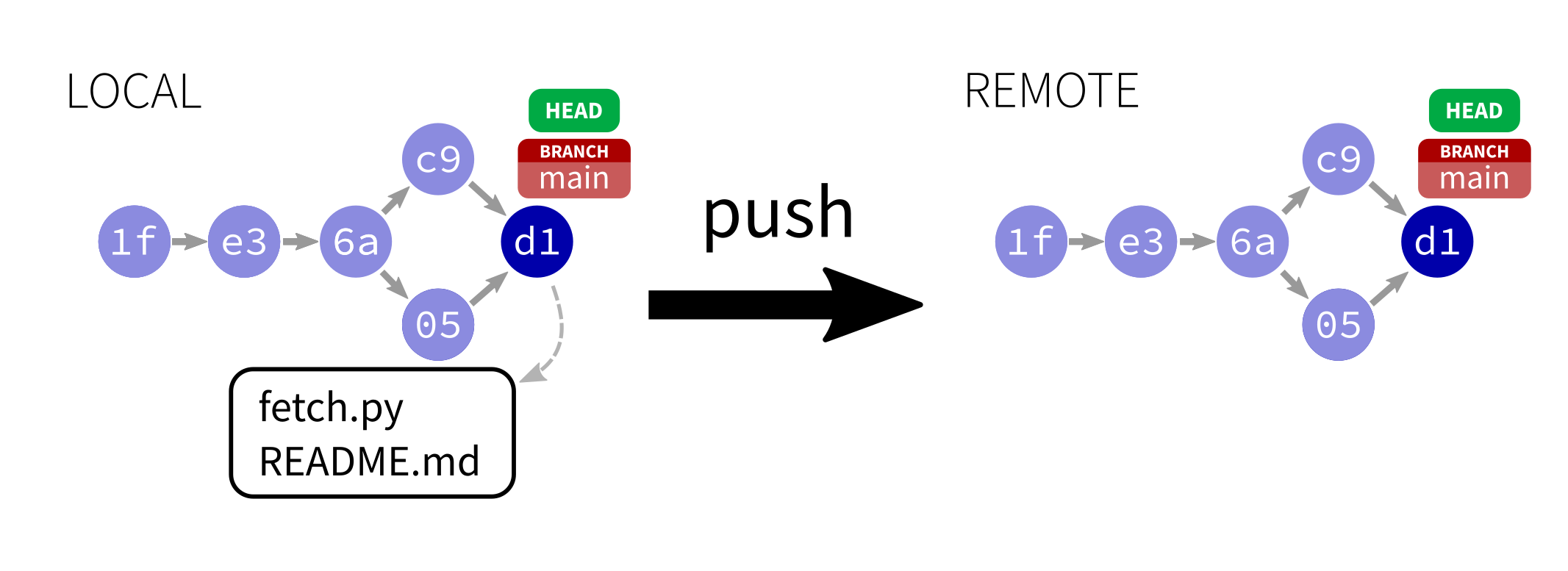
References
- PyGame home page
- git home page
- Official git documentation (includes tutorial videos, Pro Git book)
- git - the simple guide (nice practical introduction, with mild profanity)
Revision history
- 2023-04-28 Finalization of the 2023 lecture this was based on
- 2024-04-24 Initial publication
- 2024-04-26 Fix title based on what we actually did